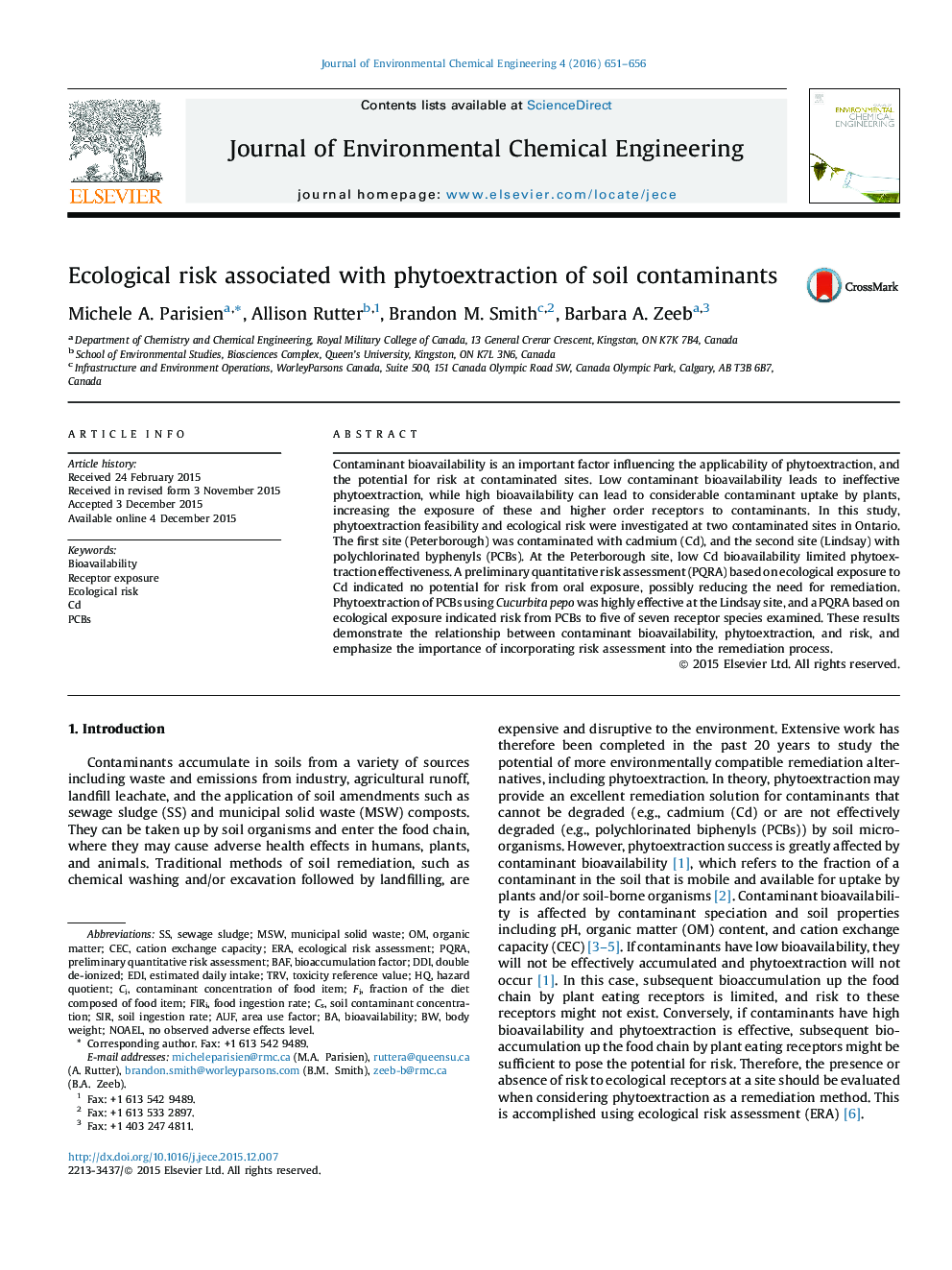| کد مقاله | کد نشریه | سال انتشار | مقاله انگلیسی | نسخه تمام متن |
|---|---|---|---|---|
| 221920 | 464267 | 2016 | 6 صفحه PDF | دانلود رایگان |
• We evaluate the relationship between bioavailability, phytoextraction, and risk.
• Low Cd bioavailability eliminated phytoextraction as a remediation option.
• Low Cd bioavailability also eliminated ecological risk and the need for remediation.
• High PCB bioavailability led to high phytoextraction efficiency.
• High PCB bioavailability also resulted in the potential for ecological risk.
Contaminant bioavailability is an important factor influencing the applicability of phytoextraction, and the potential for risk at contaminated sites. Low contaminant bioavailability leads to ineffective phytoextraction, while high bioavailability can lead to considerable contaminant uptake by plants, increasing the exposure of these and higher order receptors to contaminants. In this study, phytoextraction feasibility and ecological risk were investigated at two contaminated sites in Ontario. The first site (Peterborough) was contaminated with cadmium (Cd), and the second site (Lindsay) with polychlorinated byphenyls (PCBs). At the Peterborough site, low Cd bioavailability limited phytoextraction effectiveness. A preliminary quantitative risk assessment (PQRA) based on ecological exposure to Cd indicated no potential for risk from oral exposure, possibly reducing the need for remediation. Phytoextraction of PCBs using Cucurbita pepo was highly effective at the Lindsay site, and a PQRA based on ecological exposure indicated risk from PCBs to five of seven receptor species examined. These results demonstrate the relationship between contaminant bioavailability, phytoextraction, and risk, and emphasize the importance of incorporating risk assessment into the remediation process.
Journal: Journal of Environmental Chemical Engineering - Volume 4, Issue 1, March 2016, Pages 651–656
